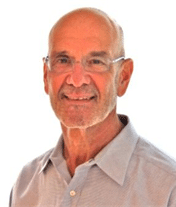 Physician burnout manifests itself in various ways. Disruptive behavior has long been recognized as a destructive force in the healthcare environment and most organizations have established mechanisms for dealing with such behavior.
Physician burnout manifests itself in various ways. Disruptive behavior has long been recognized as a destructive force in the healthcare environment and most organizations have established mechanisms for dealing with such behavior.
Other forms of burnout are harder to recognize but present similar challenges to an organization’s effectiveness in fulfilling its mission. Many physicians manifest burnout with disengagement. They find “work arounds” to the EMR, are late in attendance or miss crucial decision-making meetings, refuse to take call without guaranteed compensation, refuse to adapt protocols and are tardy in completing charts or other required documentations. Some are leaving medicine for other careers, while others are retiring early. (See the 2015 Physician Stress and Burnout Report)
In our work with healthcare organizations through the U.S., we have found the most frequent underlying causes of burnout are:
- Perception of disenfranchisement
- Fear of loss of autonomy
- Lack of trust in the organization
- Rapid capricious change with suboptimal change management strategies
- Poor organizational communication strategies
Many healthcare organizations are not dealing effectively with physician burnout. In fact, in a recent survey of over 2,000 physicians, only 18% said their organizations were helping them to effectively deal with stress and burnout. The organizations dealing with it, are dealing with physician burnout after it manifests itself. They are so busy treating the disease of burnout, they are not focusing on its prevention.
Unfortunately, once the burnout disease manifests itself, it has almost always spread to others. It takes only one or two disgruntled physicians to create a toxic organizational culture, destroying trust and collaboration and slowing or disabling strategic initiatives needed for organizational survival and growth. One only has to relive their EMR implementation for proof of this.
It is critical for organizations to develop strategies for preventing or at least reducing physician burnout. The causes of burnout outlined above need to be systematically addressed. Developing effective physician leadership is the first step in this process.
Providing physician leaders in your organization with effective leadership skills give them the tools and confidence they need to engage their peers and empower them in, such as team building and maintenance, leading change, facilitating healthy conflict, maintaining optimism and resiliency, relationship building and maintenance and mastering crucial conversations.
The bad news is such training takes an investment and a commitment from the organization that starts with the CEO and ends with the frontline physician leader. In contrast to management training, leadership training is not easily scalable and is labor intense. Our experience has taught us to be effective we need to use a combination of didactic and experiential learning, case reports, facilitated discussion with leadership mentoring, and peer coaching. The most effective training programs are focused and limited to maximum number of 30 physicians at a time.
This good news is, this approach works! Graduates from our leadership program, as reported by independent follow-up surveys performed by the organizations we have worked with, overwhelming (over 95%) report they are effectively building trust and relationships, turning conflict into a positive engagement strategy, are re-engaging with burned out physicians.
Today’s healthcare organizations have three choices in dealing with physician burnout:
- Ignore it
- Treat it
- Prevent it by developing effective physician leadership
Which strategy is your healthcare organization using? Ignoring the problem won't fix it, and the financial impact of doing nothing, is far greater than the cost of implementing a preemptive solution.
Interested in evaluating the cost of inaction?
Click here to use our ROI Calculator, comparing the annualized revenue loss of doing nothing with the Revenue Retention provided by Physician Well Being Resources, a proactive, comprehensive, unique Employee Assistance Program (EAP) designed specifically for physicians and providers.
Update May 18, 2015:
Mayo Clinic Proceedings April "Impact of Organizational Leadership on Physician Burnout and Satisfaction" concluded, "The leadership qualities of physician supervisors appear to impact the well-being and satisfaction of individual physicians working in health care organizations. These findings have important implications for the selection and training of physician leaders and provide new insights into organizational factors that affect physician well-being." Results of over 2800 physicians surveyed reported 1-point increase in composite leadership score was associated with a 3.3% decrease in the likelihood of burnout and a 9.0% increase in the likelihood of satisfaction.
VITAL WorkLife is the only company today providing healthcare organizations and practitioners easy access to the help they need. Dedicated teams of experienced medical and behavioral health professionals understand the unique needs of doctors and their families, and deliver the services needed to help overcome work and life challenges.
We Can Help
VITAL WorkLife is here to support you in every dimension of your life. Contact us for the support you need or to schedule an appointment with a counselor or peer coach.
Physician/Provider Well Being Resources members call 877.731.3949 or access resources through your VITAL WorkLife App.


